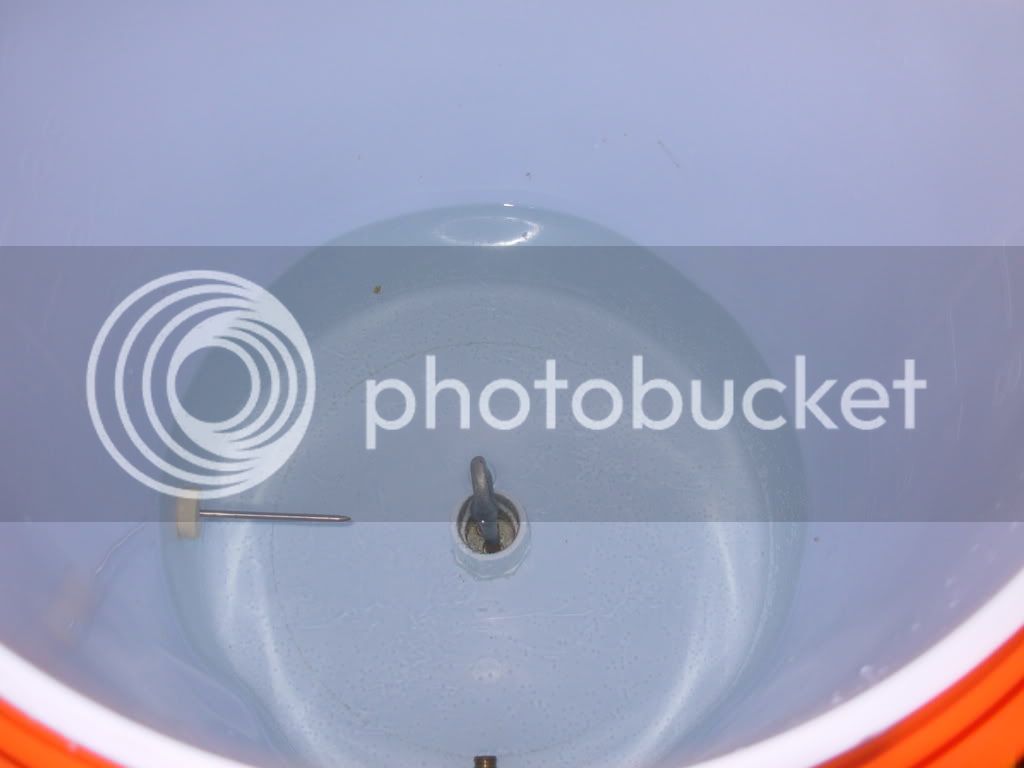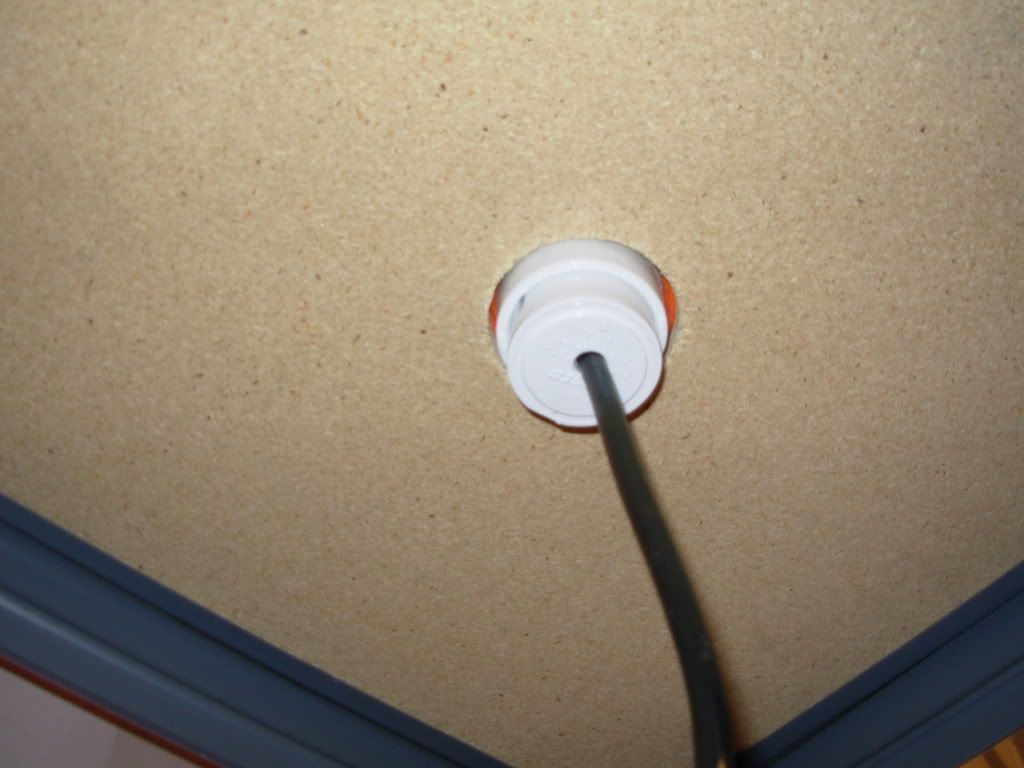Okidoke... well...
The plastic part inside the cooler is a 1.25" threaded PVC coupler that I used to tighten the element into the bottom of the cooler. The threads do not match up perfectly, but well enough to tighten the element in the cooler... I just went around Lowes plumbing dept. until I found a pice that fit the water heater element.
I used hole saws to drill the holes into the bottom of the cooler. I used a 2.5" drill to drill through the OUTER shell and the foam insulation of the cooler. THEN I stopped before I went through the inner shell. I then took a smaller hole saw that was just large enough to facilitate the insertion of the heating element and drilled the smaller hole into the inner shell of the cooler.
I DID NOT use any sealant... only the provided seal with the heating element. I DID however encase my electrical connections in an insulator. I potted the electrical connections on the heating element so that there is NO WAY that they can come into contact with water. Basically it is inserted into a PVC sleeve and then filled with an insulating epoxy, encasing the connections.
DO NOT use a bathroom ventilation fan... they burn up in a matter of hours. I finally purchased an AC Gear Motor from McMaster Carr and a dedicated impeller. I will include a link to my HLT build details at the bottom of this response. You need a motor that is rated for continuous duty, about 100-200RPM and preferrably fan cooled.
The thermowell is a drilled stopper, coupled with a SS dip tube that was modified to be a thermowell. The Johnson Controls A419 temperature probe is then slid down the tube, into the HLT to measure the HLT water temp.
I have no idea what was in the link that you referenced above... I dont have a clue. LOL Here are my details about my HLT!!
https://www.homebrewtalk.com/f11/new-10-gallon-herms-pics-76773/index4.html
More:
https://www.homebrewtalk.com/f11/new-diamond-plated-herms-hott-pics-88891/
Look at this thread... a lot of info on my system there!








